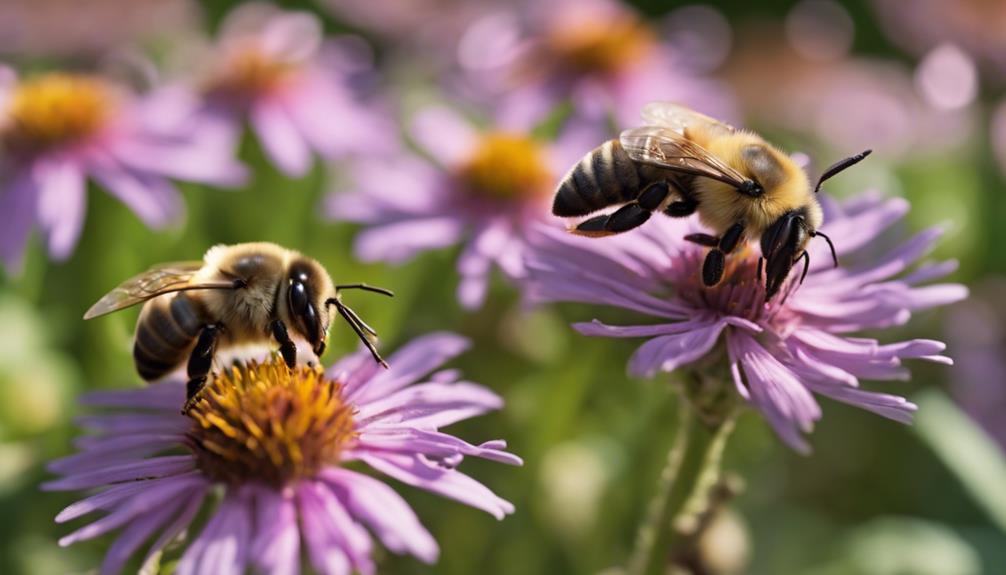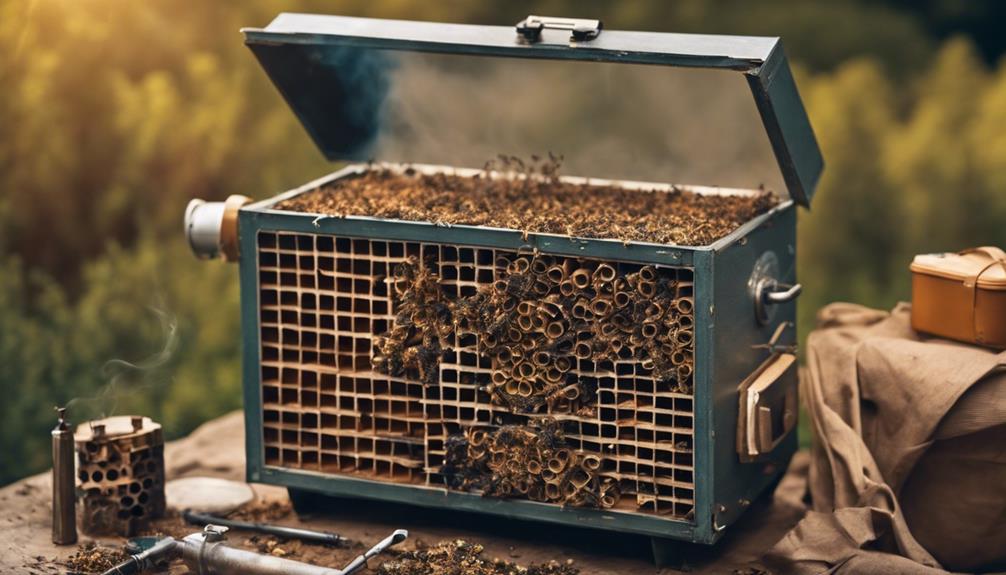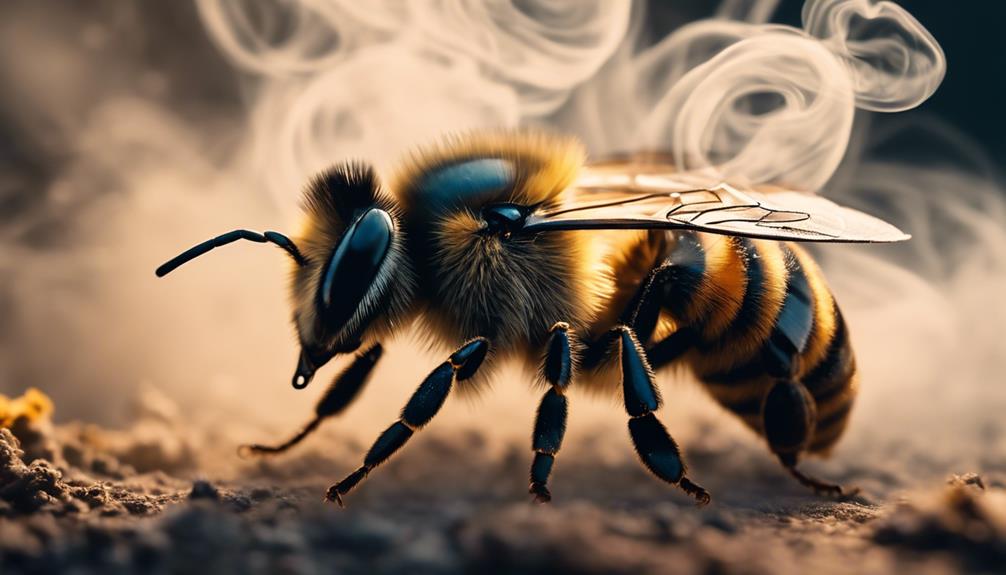So, here’s the lowdown on Carnica versus Carniolan bees: Although they’re both under the Apis mellifera carnica family tree, Carnica bees are from Carniola in Slovenia and are repositories of genetic purity, while Carniolan bees show off exceptional traits like gentle behavior and winter hardiness. Italian bees are the chill pals of the bee world, but Carniolans, although a tad more defensive, can be managed with some good ol’ smoke to keep them in line. If you’re into beekeeping, understanding these differences is key. Stick around to uncover more buzzworthy details on these fascinating bee subspecies!
Main Points
- Carnica and Carniolan bees are the same subspecies with no genetic variation.
- Both originate from Carniola in Slovenia and are valued for purity.
- Carniolan bees are known for their gentle behavior and winter resilience.
- Carniolan bees have a more defensive nature and are prone to swarming.
- Italian bees are more laid-back, excel in honey production on warm days, and have different brood production timelines.
Genetic Origins and Characteristics
We’re discussing the genetic origins and characteristics of Carnica and Carniolan bees. These bees, also known as Carniolan honey bees, belong to the same subspecies, Apis mellifera carnica, with no genetic variation between them. Originating from the region of Carniola in Slovenia, they’re highly valued for their purity and genetic potential.
The Slovenian Carniolan honey bees are protected to maintain their exceptional traits. These bees are famous for their gentle behavior, their ability to fend off pests effectively, and their resilience during harsh winters. Their genetic makeup and characteristics make them a preferred choice for many beekeepers seeking reliable and productive bees.
The Carnica and Carniolan bees truly stand out in the world of beekeeping with their exceptional qualities.
Temperament and Behavior
Exploring the contrasting temperaments and behaviors of Italian and Carniolan bees reveals fascinating insights into their unique characteristics. Examining the temperaments and behaviors of these bee varieties couldn’t be more different. Here are some key points to ponder:
- Italian bees are known for their laid-back demeanor, making them a pleasure to work with for beekeepers.
- Conversely, Carniolan bees have a more defensive nature but can be effectively managed with the use of smoke.
- Carniolan bees possess genetic traits that make them more prone to swarming compared to Italian bees, while Italian bees excel in honey production on warmer days.
Understanding these behavioral differences is vital for beekeepers to guarantee the well-being and productivity of their hives.
Environmental Adaptability
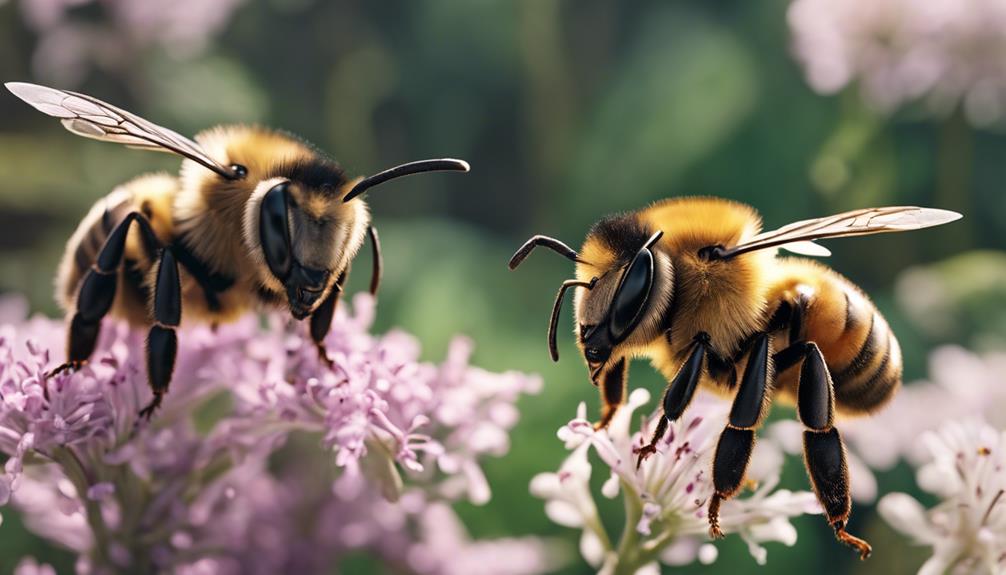
Adapted to colder climates and harsh winters, Carniolan bees thrive in regions like Slovenia, the Austrian Alps, and the Balkans. These bees are experts at maximizing foraging efficiency during nectar flows, rapidly expanding their worker population to seize opportunities.
What’s fascinating is how Carniolan bees adjust their workforce based on nectar availability, ensuring their hive operates at peak productivity levels. Their knack for storing abundant honey and pollen during nectar-rich periods is a survival strategy that sees them through times of scarcity.
This adaptability not only helps the bees flourish in challenging environments but also benefits beekeepers seeking resilient colonies. Carniolan bees shine in sustainable beekeeping practices, thanks to their resilience against diseases and parasites.
Disease Resistance
Carniolan bees’ remarkable disease resistance sets them apart in the world of beekeeping, showcasing their innate ability to combat common bee illnesses and pests effectively. Here are three key points to highlight their resilience:
- Varroa Mites Defense: Carniolan bees exhibit a strong defense mechanism against Varroa mites, a notorious threat to bee colonies worldwide. Their ability to resist and control Varroa mite infestations contributes significantly to their overall health and survival.
- Genetic Makeup: The genetic composition of Carniolan bees plays a pivotal role in their disease resistance. Their genes equip them with strong immune systems, enabling them to fend off various diseases and pests more effectively compared to other bee species.
- Environmental Adaptability: Carniolan bees are known for thriving in diverse environmental conditions, which further boosts their ability to resist diseases. This adaptability allows them to navigate challenging climates and habitats with resilience, making them a preferred choice for beekeepers seeking robust and resilient colonies.
Brood Production and Productivity
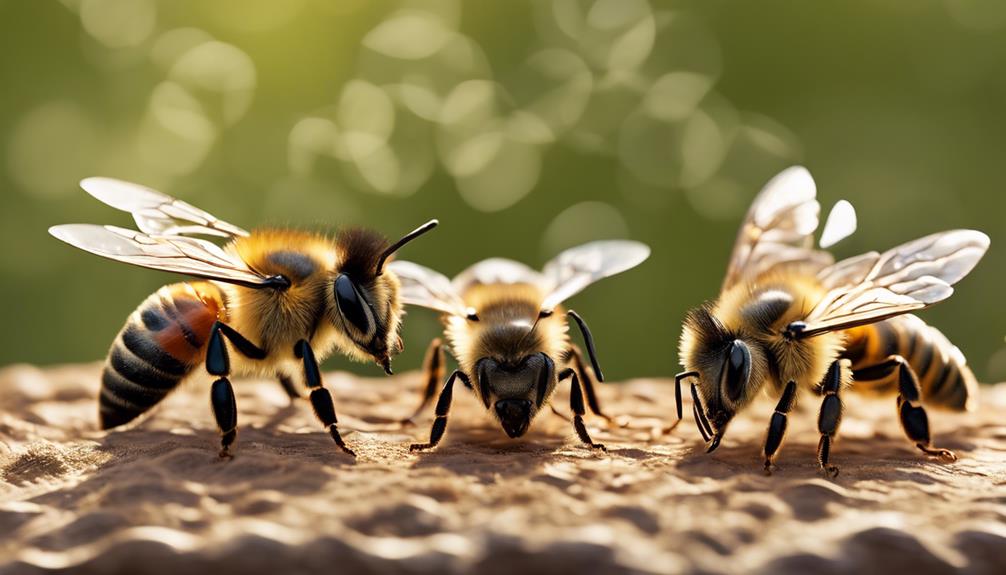
How do Italian and Carniolan bees differ in terms of brood production and productivity?
Italian queens kickstart brood production early, aligning with the first pollen influx, whereas Carniolan queens lag behind by 45 days, requiring more pollen and nectar.
As summer wanes, Italian queens taper off brood production in August due to dwindling nectar, whereas Carniolan queens maintain robust output well into late September, fortifying their colonies for winter.
In terms of honey production, Italian bees, known for their ease of handling, are less active on cool days, contrasting with Carniolan bees that excel in cooler temperatures, resulting in approximately 15% more honey.
While Italian bees have an average cluster size for winter, Carniolan bees head into the cold season with a larger cluster, necessitating more food and possibly requiring supplementary feeding come early February.

Hello! My name is Noel Calvin. I graduated from UCLA and now work as a writer at Launch Ninjas. I write blog posts that inspire and guide our readers in their entrepreneurial pursuits. I live in Pleasantville, NJ, with a peaceful yet lively atmosphere that inspires me.
Writing stories is more than just a job for me. It allows me to share my observations and satisfy my curiosity about the world. I combine my analytical skills with creative enthusiasm to delve into technology trends and startup stories. But my life isn’t limited to screens and keyboards. I value loyalty, passion, and a touch of old-fashioned charm, which I infuse into every narrative I create.
I love spending time in my garage, jamming with my band when I’m not writing. Playing the guitar and singing bring me immense joy. I also enjoy capturing ordinary and extraordinary moments through my camera lens and exploring new culinary adventures that excite my taste buds. I’m always seeking new experiences.
My family is very important to me. Joyful Sunday brunches filled with laughter and intense board game nights keep me grounded, reminding me of life’s simple pleasures.
In my world, every moment is an opportunity for discovery. Every discovery is a story worth sharing, whether a heartfelt moment at home or the pulse of technological innovations. Join me as I navigate through life, one blog post, one guitar strum, and one heartwarming family dinner at a time.
